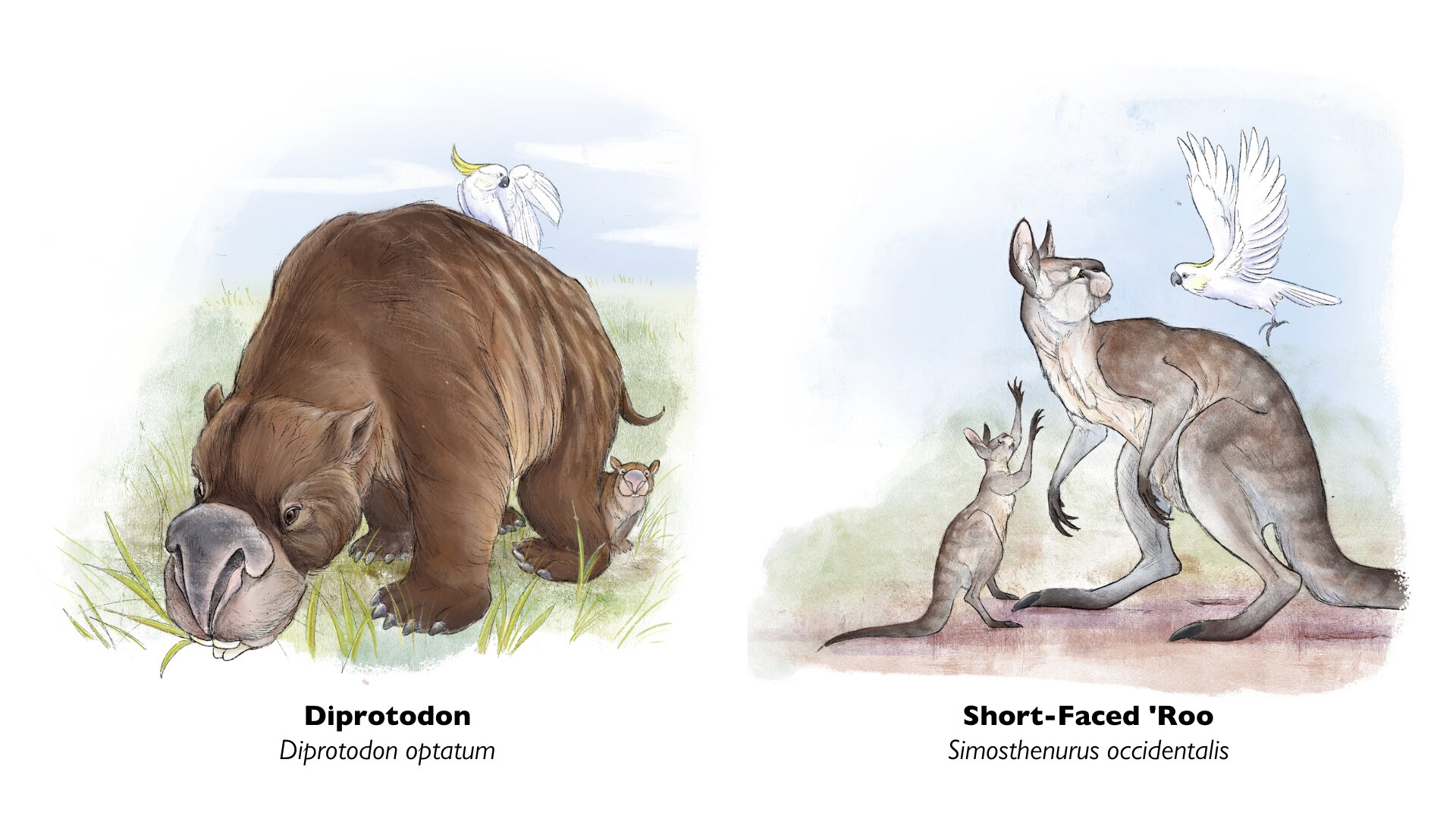
Eleanor Pease is a palaeontologist and artist.
Australia's famed 'giant' species went extinct because of different combinations of human hunting and climate change, and now it has been found that changing food availability made things worse.
The process that contributed to the disappearance of ancient megafauna communities across south-eastern Australia tens of thousands of years ago has been uncovered by new modeling.
The big, plant-eating megafauna of the Naracoorte region in the southeast of modern-day South Australia were vulnerable to changes in the plants on which they fed. The extinction of the biggest herbivores might have been caused by changing food supply driven by climate change or human land use.
The scientists at the Australian Research Council Center of excellence for Australian Biodiversity and Heritage (CABAH) led the research. A paper about the modeling methods and analysis is in the journal Ecography.
The Naracoorte Caves World Heritage area is well-known for its prehistoric fossils. We know that the giant, wombat-like plant eaters Diprotodon went extinct in Australia, but the combination of events leading to their extinction varies across the continent. The blend of environmental changes and human hunting is still being debated.
A team of scientists from five universities used mathematical techniques to build computer-based networks that represented the Naracoorte environment, and shed some light on the problem.
The scientists built versions of the Naracoorte community network to test whether the megafauna were more vulnerable to extinction cascades that started with the plants.
"We can model the ecological community using powerful computing methods and estimate how vulnerable extinct or modern species are to changes in the environment," says Dr. John.
The models we used showed that the extinct megafauna, particularly the big plant eaters, were more vulnerable to the cascading co extinctions of plant species than were the species we still have today.
The analyses showed that plant eaters that specialized on only a few plant species for food were vulnerable.
Professor Bradshaw says that despite decades of research trying to understand what caused Australia's biggest species to die out, much of the ecology of these communities has been overlooked.
cological-network models are useful for studying interactions among species and examining how past extinction events unfolded, as well as how future extinction patterns might play out.
"Our methods have evolved impressively over the past few years to be able to infer who probably ate whom in these long-disappeared communities, but also provide fresh ecological insights into how extinction cascades likely occurred using the power of modern computing," says Professor Bradshaw.
The underlying reasons for big changes observed in the past and those predicted in the future are complex and rarely caused by single disturbances. The disappearance of Australia's largest animals is no different.
Dr. Llewelyn says network modeling is an approach to predict interactions among species and the impact of environmental changes. Despite its potential, the technique is not being utilized.
We hope that more researchers realize the value of ecological networks for predicting ecological changes. It's an emerging area that has a lot of potential.
John Llewelyn and his colleagues found that the megafauna were vulnerable to community changes due to their position in the trophic network. The DOI is 10.1111/ecog.06089.
Ecography journal information.
The news about Extinct megafauna prone to ancient 'hunger games' was retrieved on December 14, 2021.
The document is copyrighted. Any fair dealing for the purpose of private study or research cannot be reproduced without written permission. The content is not intended to be used for anything other than information purposes.
